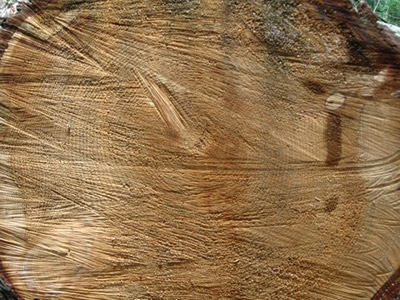Hardwood floors have a natural complexity, yet can bring luxurious simplicty or an intricately patterned design into any room. The long-lasting attributes of hardwood flooring and its ability to conform with the décor and design of any room makes hardwood flooring a flooring choice you can make in confidence. However, once you choose to install a hardwood floor, you have many other decisions to make. One of those decisions is to determine the type of hardwood you will be using for your floor.
Any wood that comes from a broad-leafed tree is considered a hardwood. Softwoods come from needle-bearing trees. Well-known hardwood-bearing trees are maple, oak, ash, hickory, chesnut, cherry, walnut, beech and the beautiful mahogany. There are many other hardwood trees around the world that fall under exotic or tropical hardwood categories, but you can also get the look of exotic finishes on less-expensive local hardwood if you don’t have an unlimited budget. Not all hardwoods are used for floors (ebony is an example) because the price would be exorbitant. If you are environmentally conscious, make sure you choose your hardwood from an environmentally sustainable forest. Characteristics of some hardwood species are unsuitable for flooring.

The grains of hardwood trees are larger than the grains of softwood trees, but each tree will come with its own characteristic grain, knots and pores. No two grains will be identical, because the grain of the tree is determined by the tree’s age, climate, cell structure and numerous other environmental factors. No other home in the world will hold the same grain pattern on its floor as yours. It is customary for retailers to charge more for a grain that is rich and fluid, or plainer and knot-free. Less expensive woods run in between the perfectly fluid and perfectly stark ideals.
Hardwoods will also vary in color – refreshing whites, warm reds, rich red browns, stark black browns, and neutral beiges are all available to fit into the color palette of your decorating scheme. You can also finish and paint a hardwood floor in virtually any color you can think of.
Oak and Maple are the two most popular choices for hardwood floors. Oak is an open-grained darker hardwood, with a strong, wider grain pattern. It does tend to absorb paint slowly. Maple is a light subtly grained hardwood, a good choice when a light, non-obtrusive floor is desired, and it willingly takes in a coat of paint. Maple, Ash and Beech are all lighter colored hardwoods with a close grain– although beech can run from a light red to a darker red. Ash is known to take on an excellent finish.
Walnut has a thicker grain and can carry the rich color of dark chocolate. It will take on a finish well if its large pores are filled. Teak and mahogany are darker colors sometimes used for floors, but are significantly pricier than traditional wood flooring material. Mahogany, walnut and cherry are considered to have medium pores. If you can’t resist the dark, rich colors and patterns of pricier exotic woods, but have to resist their price tag, you can always opt for a similarly colored finish or a less expensive hardwood laminate that has a thin layer of the desired wood affixed on top of less-expensive woods and materials.

Color and grain will help you decide on the type of hardwood you want for your floor. Keep in mind that colors, grains and knots will vary between each hardwood floor piece, even with the same tree species. But the shades, grain patterns and hues will blend together to create a naturally fluid design.
Look at your room’s color palette, furnishings, size and décor, and start comparing colors and grain patterns. By simply deciding if you want a dark wood or light wood you significantly narrow down your choices, and your complex decision can turn out to be satisfyingly simple. Once you choose your tree – your hardwood floor can be designed to be as complex or as simple as you want it to be.